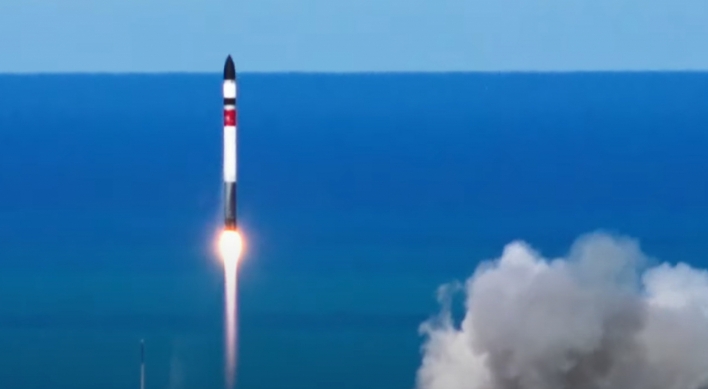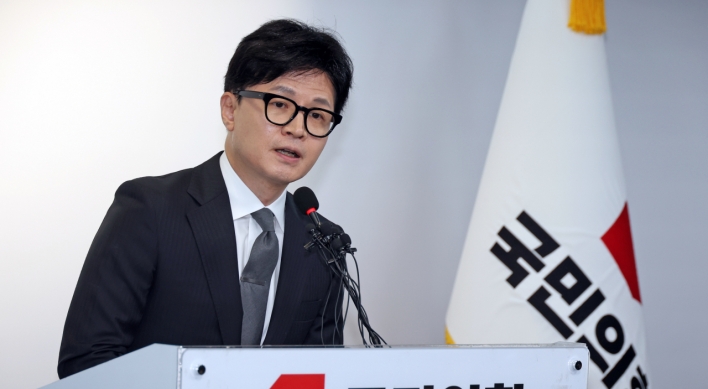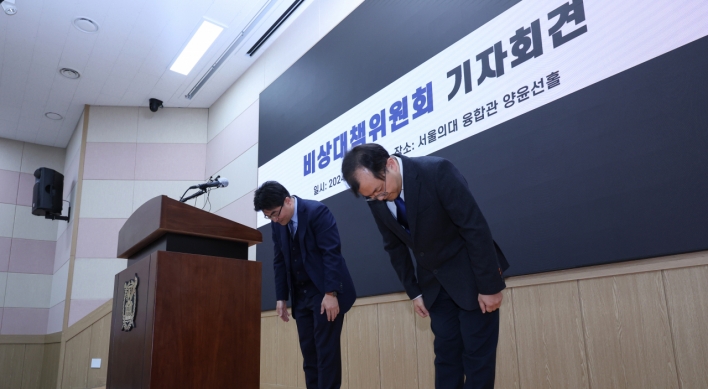Preliminary study on missile shield system to be completed by year-end
The South Korean military is seeking to develop its own version of the Patriot missile system, which is capable of intercepting North Korean ballistic missiles and fighter jets, multiple sources said Friday.
It is pushing to build the envisioned long-range surface-to-air missile with an operational range about twice that of the U.S.-made Patriot Advanced Capability-3, they said. PAC-3 has a maximum range of around 70 kilometers.
The move comes as North Korea has been continuing its development of missile and nuclear capabilities, which have posed a threat not only to neighboring countries such as South Korea and Japan, but also to the U.S.
The state-run Defense Agency for Technology and Quality will finish its preliminary research on the new weaponry by the end of this year, they said.
The military plans to set up its basic development strategy by January or February next year and begin the “exploratory development” process to check the feasibility before development of the weaponry begins, the sources said.
The envisioned project to produce some 10 such missiles is expected to cost around 970 billion won ($812 million).
The military is seeking to make the new missile capable of intercepting enemy aircraft flying at altitudes of higher than 60 kilometers. Its range is expected to be four times longer than the PAC-2 missiles and indigenous Cheolmae-II intermediate-range missiles, all of which have been run by the South Korean military.
The military plans to establish a three-tier aerial defense system with the envisioned missile covering high-altitude hostile targets and the PAC-2 and Cheolmae-II missiles handling the mid-altitude missiles.
“The development of the missile was included in the 2009 basic defense reform plan and a decision on that was made in April last year. I understand that it is designed to protect key national institutions and military facilities in the central and southern parts of the country,” a source said, declining to be named.
U.S. officials have repeatedly expressed concerns over the reclusive state’s development of warheads and delivery systems for them.
Earlier this year, then U.S. Defense Secretary Robert Gates said North Korea with its continuing development of missiles and nuclear technologies is becoming a “direct” threat to the U.S.
The longest-range North Korean ballistic missile, which has been deployed since 2007, is the Musudan missile with a range of 3,000-4,000 kilometers. This missile, in theory, brings Guam, a key U.S. strategic base in the Asia-Pacific region, within its range.
The longest-range North Korean missile under development is the Taepodong-2 missile, presumed to have a range of more than 6,700 kilometers, far enough to hit parts of Alaska, but still incapable of reaching the U.S. mainland.
By Song Sang-ho (sshluck@heraldcorp.com)
The South Korean military is seeking to develop its own version of the Patriot missile system, which is capable of intercepting North Korean ballistic missiles and fighter jets, multiple sources said Friday.
It is pushing to build the envisioned long-range surface-to-air missile with an operational range about twice that of the U.S.-made Patriot Advanced Capability-3, they said. PAC-3 has a maximum range of around 70 kilometers.
The move comes as North Korea has been continuing its development of missile and nuclear capabilities, which have posed a threat not only to neighboring countries such as South Korea and Japan, but also to the U.S.
The state-run Defense Agency for Technology and Quality will finish its preliminary research on the new weaponry by the end of this year, they said.
The military plans to set up its basic development strategy by January or February next year and begin the “exploratory development” process to check the feasibility before development of the weaponry begins, the sources said.
The envisioned project to produce some 10 such missiles is expected to cost around 970 billion won ($812 million).
The military is seeking to make the new missile capable of intercepting enemy aircraft flying at altitudes of higher than 60 kilometers. Its range is expected to be four times longer than the PAC-2 missiles and indigenous Cheolmae-II intermediate-range missiles, all of which have been run by the South Korean military.
The military plans to establish a three-tier aerial defense system with the envisioned missile covering high-altitude hostile targets and the PAC-2 and Cheolmae-II missiles handling the mid-altitude missiles.
“The development of the missile was included in the 2009 basic defense reform plan and a decision on that was made in April last year. I understand that it is designed to protect key national institutions and military facilities in the central and southern parts of the country,” a source said, declining to be named.
U.S. officials have repeatedly expressed concerns over the reclusive state’s development of warheads and delivery systems for them.
Earlier this year, then U.S. Defense Secretary Robert Gates said North Korea with its continuing development of missiles and nuclear technologies is becoming a “direct” threat to the U.S.
The longest-range North Korean ballistic missile, which has been deployed since 2007, is the Musudan missile with a range of 3,000-4,000 kilometers. This missile, in theory, brings Guam, a key U.S. strategic base in the Asia-Pacific region, within its range.
The longest-range North Korean missile under development is the Taepodong-2 missile, presumed to have a range of more than 6,700 kilometers, far enough to hit parts of Alaska, but still incapable of reaching the U.S. mainland.
By Song Sang-ho (sshluck@heraldcorp.com)



![[Exclusive] Korean military set to ban iPhones over 'security' concerns](http://res.heraldm.com/phpwas/restmb_idxmake.php?idx=644&simg=/content/image/2024/04/23/20240423050599_0.jpg&u=20240423183955)
![[AtoZ into Korean mind] Humor in Korea: Navigating the line between what's funny and not](http://res.heraldm.com/phpwas/restmb_idxmake.php?idx=644&simg=/content/image/2024/04/22/20240422050642_0.jpg&u=)

![[Graphic News] 77% of young Koreans still financially dependent](http://res.heraldm.com/phpwas/restmb_idxmake.php?idx=644&simg=/content/image/2024/04/22/20240422050762_0.gif&u=)




![[Pressure points] Leggings in public: Fashion statement or social faux pas?](http://res.heraldm.com/phpwas/restmb_idxmake.php?idx=644&simg=/content/image/2024/04/23/20240423050669_0.jpg&u=)







